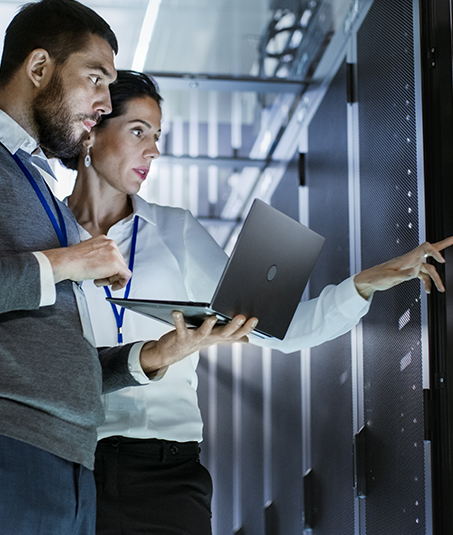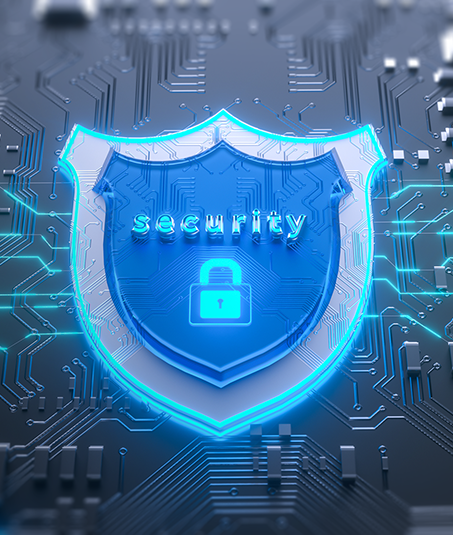
Secure products and services
We follow industry best practices to provide reliable products and responsive support.

Open cyber ecosystem
We uphold openness and shared responsibility to build a better cyber ecosystem together.

Privacy protection
We fully respect and protect the personal data and privacy of our customers.
Resources

2025-01-22
Dahua NIS2 White Paper
On December 14 2022, European Union (EU) adopted an updated version of the NIS directive to replace the initial NIS directive that was established in 2016. The new NIS directive (“NIS2”) addresses the limitations of the initial NIS directive through establishing with stricter cybersecurity requirements, and expanding the scope of entities and sectors that fall within the scope of the new directive. Overall, the NIS2 Directive focuses on those organizations that are essential and important in the supply chain of critical infrastructure.



2023-09-11
Dahua Product Security White Paper v3.0
Without the prior written permission of Zhejiang Dahua Technology Co., Ltd. (hereinafter referred to as "Dahua"), no one may copy, transmit, distribute or store any content of this document in any form. The products described in this document may contain software copyrighted by Dahua and other third parties. No one shall copy, distribute, modify, extract, decompile, disassemble, decrypt, reverse engineer, lease, transfer, sublicense or otherwise infringe the copyright of the software in any form except with the permission of the relevant owner.



2023-08-03
Initialization and Password reset for Networking Cameras V1
In order to strengthen device security and ensure the safety of user information, new firmware on Dahua devices will feature initialization and password reset functions. When using networking cameras for the first time, users will need to initialize the device with a strong password. Users who have forgotten their password can reset it through email verification. Initialization:At the first time to use the device, a compulsory strong password setting is needed, and an user email address setting for password reset is recommended.The password ranges from 8 to 32 digitals. It can contain letters, numbers and special characters (excluding “'”,“"”,“;”,“:”,“&”) . The password shall contain at least two categories. The operation steps refer to attachment. Password Reset: If password is forgotten, users can reset the password by the following method(for admin only): QR code: Use Easy4ip or DMSS to scan the reset QR code and your email set before will receive the security code. Input the security code to reset the password of admin.



2023-08-03
Best Practices
Cybersecurity is more than just a buzzword: it’s something that pertains to every device that is connected to the internet. IP video surveillance is not immune to cyber risks, but taking basic steps toward protecting and strengthening networks and networked appliances will make them less susceptible to attacks. Below are some tips and recommendations from Dahua on how to create a more secured security system.


News and Blogs
Dahua Network Camera Series Obtains CC EAL 3+ Certificate
May 16, 2024 / Hangzhou, China. Dahua Technology, a world-leading video-centric AIoT solution and service provider, is proud to announce that its network cameras have successfully obtained Common Criteria (CC) EAL 3+ certificate. This achievement demonstrates Dahua’s dedication to delivering secure and reliable solutions that comply with the industry's highest information security standards and best practices.
Statement on NIS2 Compliance
European Union (EU) adopted an updated version of the NIS directive on December 14th, 2022 ("NIS2 Directive" or "NIS2"). The new directive addresses the limitations of the initial NIS directive by establishing stricter cybersecurity requirements and expanding the scope of entities and sectors subject to it. As the NIS2 Directive is an EU directive, Member States are required to adopt it into their national laws before October 17th, 2024.
3 Minutes to Understand Dahua Product Security Whitepaper
With the maturity of AIoT technologies, responsible, open, professional, and systematic cybersecurity and privacy protection have become an important guarantee for the long-term and healthy development of the industry. As a world-leading video-centric AIoT solution and service provider, Dahua always attaches great importance to cybersecurity and privacy protection.
How Can Dahua Products Help Users Comply with GDPR
General Data Protection Regulation (GDPR) was issued by European Parliament on April 27th, 2016. It consists of 11 chapters with totally 99 items, which will be fully implemented on May 25th, 2018.
DAHUA CYBERSECURITY OVERVIEW
Cybersecurity is One of Our Top Priorities










